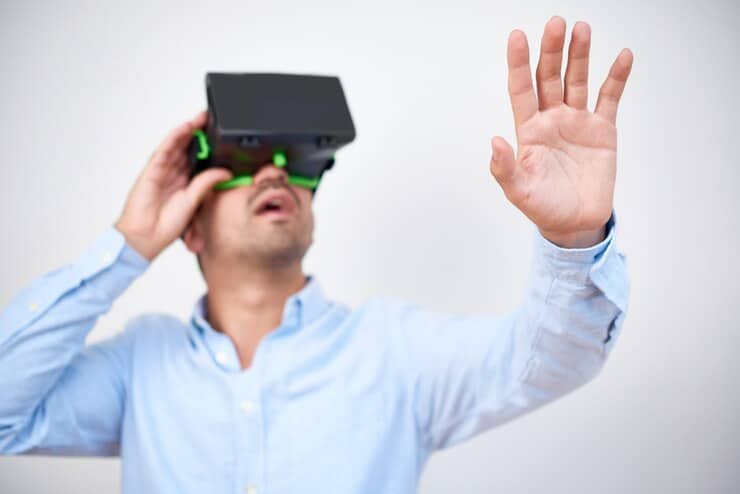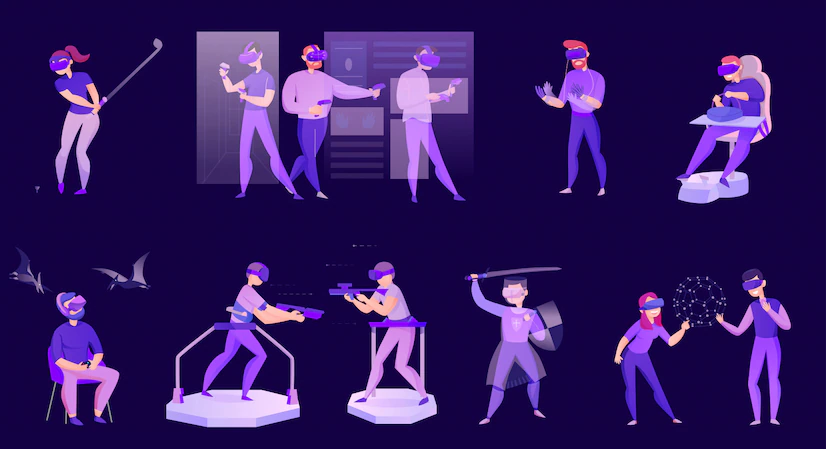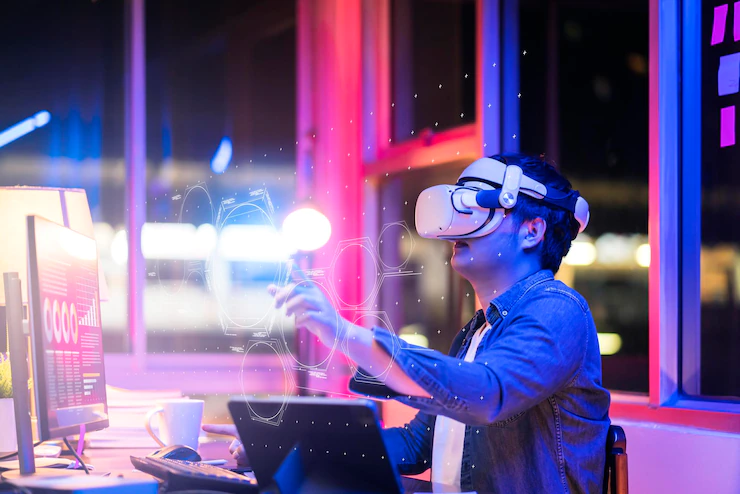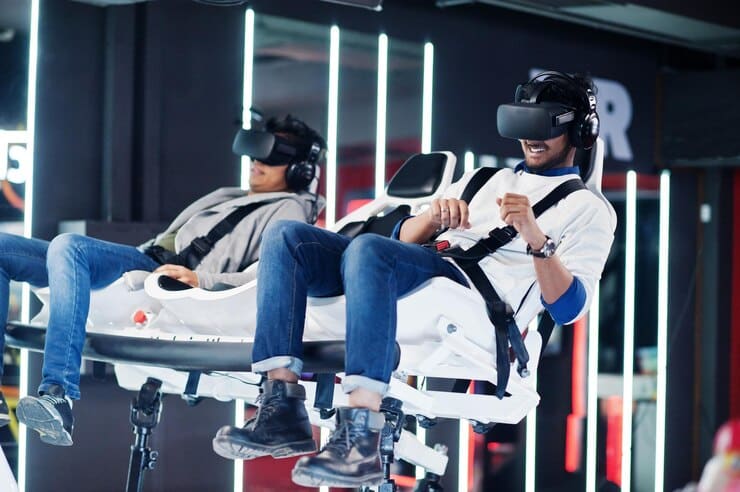Are You Curious About Augmented Reality (AR)? Do You Hear Amazing Tales About How it Will Revolutionize Our Environment, but Are Stumped Where to Begin? Here is your Beginners Guide To Augmented Reality. This technology is revolutionizing how we interact with our environments by providing users with access to digital content within physical environments allowing users to see it while also experiencing it directly.
From playing interactive games to virtually trying on clothes, the possibilities of AR seem virtually limitless. This guide will introduce AR, outline its applications and give all of the information needed for you to begin your adventure in this exciting realm of augmented reality. If you’re ready to explore its wonders then let’s get underway!
What Is Augmented Reality?

Augmented reality (AR) refers to the process of providing additional content or information by augmenting (or augmenting) what someone sees in real-life. Content typically appears projected before their eyes or within their line of vision, although it can also be heard, felt, and smelled. AR technology has existed for decades but only recently garnered widespread media coverage.
AR has advanced from being used mostly in marketing campaigns and gaming to becoming an impactful technology with potential to change our relationships with our surroundings. AR can enhance everything from work presentations to personal life; one common use case being weather forecasts where users scan their environment to view projected predictions overlaid onto real surroundings. AR also finds use in gaming, construction, education and healthcare settings.
Guide To Augmented Reality
1. History And Evolution Of Ar

Augmented reality existed long before digital technology came into existence, having first been proposed in 1940 by British meteorologist Oliver Whyte of Oxford University. A prototype for AR technology would later be created by scientist Ivan Sutherland but wouldn’t become widely adopted until mid 2000s.
AR has rapidly grown from novelty to transformative technology since 2010, and this section will explore its history and evolution so you can better comprehend why this technology was created. Around 1940s: British meteorologist Oliver Whyte first proposed merging computer graphics with images from real world scenes.
He popularized the term “augmented reality,” emphasizing its ability to enhance real-world experience for users. 1968: Ivan Sutherland created an AR prototype. 2000s: AR technology began evolving due to smartphones and AR software. 2010s: Augmented reality emerged as an innovative technology capable of changing lives, while today it can be found being utilized across industries including education and gaming.
2. AR Technologies

Augmented reality (AR) technology comes in many different forms and each type has distinct strengths and weaknesses. Recognizing these differences between AR technologies is crucial in selecting an appropriate one for specific uses; currently available augmentation technologies include Augmented Reality (AR), Virtual Reality, Augmented Reality and Mixed Reality. These technologies are all currently in use today:
AR is the most prevalent form of AR and can be implemented using various tools and techniques. Other forms include Mixed Reality: As an intermediate between AR and VR, mixed reality allows users to see both real-world content as well as digital elements simultaneously. VR provides fully immersive virtual environments commonly found in gaming, while Augmented Virtuality bridges both environments seamlessly to allow users to switch back and forth as needed.
3. AR Applications

While AR’s potential is limitless, there are a few specific uses which have proven especially valuable. Here are the applications currently in use today: – AR Marketing: This practice uses virtual reality experiences designed to engage customers more than traditional marketing approaches can.
AR/VR in Education: AR/VR technology is being utilized in education to make content more engaging, which in turn enhances learning. AR technology is also utilized in healthcare to enhance patient experiences and reduce errors. Retailers use this form of technology to give customers a superior shopping experience through virtual try-ons and product information.
4. AR In Gaming

While many associate AR with serious, practical applications, it can also be used for entertainment purposes – specifically gaming! AR technology can create more engaging gaming experiences by making environments more interactive or projecting digital images onto real world surfaces; plus providing scores and stats in the player’s field of vision. Here are a few examples of its use within gaming: -AR In Gaming:AR technology can create immersive gaming experiences by making environments more interactive or projecting digital images onto physical surfaces while also showing scores/stats in player’s field of vision! Primari
Augmented Reality Sports Games: Sports games can become more engaging with AR technology integrated into them. Real-Time Augmented Reality can also give players stats and information about their surroundings during gameplay, while AR in location-based games creates an immersive environment for players.
5. How To Create AR Experiences

Now that you understand what Augmented Reality (AR) is and can do, you may be eager to start creating your own AR experiences. Before getting started, however, it’s important to bear a few things in mind before diving in: – AR Requires a Camera: To create AR experiences using mobile phones or tablets equipped with cameras will suffice –
Programming is the practice of developing software. If you want to create AR experiences of your own, programming will be essential. Ready-Made Tools and Platforms If you don’t feel up to starting from scratch with programming, ready-made tools and platforms exist that make life easier for novice programmers.
6. Best AR Development Tools And Platforms

ARKit from Apple provides developers with an iOS development tool for creating AR content on vertical surfaces such as walls. Meanwhile, Google’s ARCore tool has been around since 2017 and can be used both handheld and stationary modes.
Unity: Unity’s cross-platform engine makes AR development simple for developers, providing developers a way to quickly develop AR content without starting from scratch. It can be used for gaming, entertainment, and industrial applications alike. Unreal: Similar to Unity in terms of application use. Primarily utilized for gaming but capable of other tasks as well.
Also Read : 5 Innovative Technologies Transforming The Business Landscape
Conclusion
Augmented reality technology allows users to overlay digital information over the real world, revolutionizing how we interact with our environment. Although similar to virtual reality in that both technologies use headsets for immersive experience, augmented reality differs by still showing you the real world around you.
That is why most augmented reality experiences are best experienced through smartphones or cameras. If you’re ready to explore augmented reality, all that’s required to get started is selecting a development tool and begin creating!
